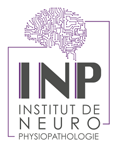Association of inoperable glioblastoma with a heterogeneous functional and survival outcome.
Résumé
e14036 Background: “Biopsy only” GBM patients is an understudied group of patients associated to a poor outcome, which has been reported to represent 21% of histologically confirmed GBM in the US National Cancer Data Base. Pattern of care included radiotherapy-temozolomide (RT-TMZ) standard regimen completed in 15% of patients, any other form of oncologic treatment in 60%, and supportive care alone in 25% of patients (Kole, Cancer 2016). Our objective was to explore heterogeneity of inoperable GBM patients group, both for patients characteristics, pattern of care planned and completed, functional and survival outcome. Methods: Patients with inoperable GBM included in a prospective regional glioma cohort initiated in 2014 were retrospectively reviewed for patients characteristics, MRI finding, treatment allocation and delivery. Functional independency analyzed as a cumulative time of KPS≥70, PFS and OS were analyzed. Results: Of 535 patients referred to our center, 449 patients were included at initial surgery, of which 158 patients (35%) underwent biopsy only. 18 patients were excluded for missing data leaving 139 patients for the present analysis. 54 (39%) were referred to RT-TMZ (50 patients completed concomitant treatment), 68 (49%) considered unfitted for RT received chemotherapy upfront (CT-UF) (of which 3 were subsequently referred to RT), 17 (12%) referred to palliative care only (PC). Groups differed at baseline for age (mean 60, 68, 69y for RT-TMZ, CT-UF, PC respectively); for KPS (70, 60, 50 for RT-TMZ, CT-UF, PC respectively); for mean tumor surface (793, 1420, 1412 cm2 for RT-TMZ, CT-UF, PC); for tumor extension (bilateral in 6.4% and 29.3% for RT-CT and CT-UF respectively); for steroid intake (45, 60, 100 mg daily respectively). Median OS was 14 months (95% CI, 9.65-18.71), 8 months (95% CI, 4.62-7.67), 2 months (95% CI, 0.67-3.33) for RT-TMZ, CT-UF, PC respectively. Of importance, mean duration of functional independence was of 8.3 months, 2.1 months, and 0.1 month for RT-TMZ, CT-UF, and PC respectively; 33/139 (24%) of the patients experienced functional independency for more than 40% of their life time. Conclusions: Inoperable GBM constitute a large and heterogeneous population in which more than 1/3 of the patients are amenable to standard of care, with survival outcome similar to the one of patients who underwent surgery. Patients considered unfit for RT-CT at diagnosis fail to be referred subsequently to RT after CT and exhibit a poor survival outcome that deserve new effective treatments. Cumulative duration of functional independence is limited and should be considered as part of treatment evaluation.
